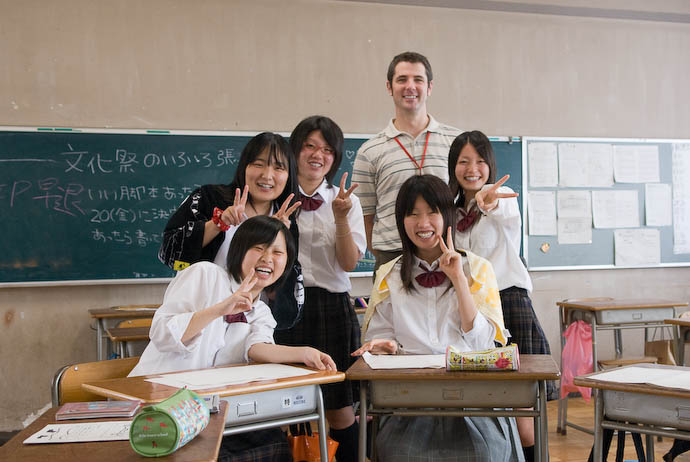It's one of the busiest time of the school year. Teachers and students are preparing for the upcoming Sports Festival at the end of the this month. Last school periods are cancelled to give way to practice. The usual fifty- minute classes are shortened to 45 minutes. Even the club activities became comparatively lighter and less rigorous so students can practice. Everything just seems hectic.
The main reason for everyone's busyness is for practicing the Japanese traditional dance called Soran. Wikipedia provides some interesting facts about this dance:
I believe that the best part of this whole dance is how it brings the students together. Last year, after the Sports Festival, students seem to be friendlier across levels. They have become closer with the whole ordeal of practicing under the heat of the sun. They became more open in a way.
For the following days to come, I know I'll see tired faces, hear unceasing shouts of "Soran" and maybe meet some sun-smelling students. But I know, the school will also be cloaked in excitement and have an atmosphere of light camaraderie.
The main reason for everyone's busyness is for practicing the Japanese traditional dance called Soran. Wikipedia provides some interesting facts about this dance:
- The dance is based on the song "Soran bushi." This is the work song of Japanese fishermen.
- The dance depicts ocean waves, fishermen dragging nets, pulling ropes and lifting their catch.
- The words that the dancers utter, "DOKKOISHO!" and "SORAN" are meant to encourage the fishermen in their work.
 |
| photo credit: http://www.colombo-plan.org/asianyouthcongress/?p=449 |
This traditional dance is part of the Physical Education curriculum in Japan.
The dance steps are actually simple. There are some waving of arms and bending of knees together with some pulling motions. The dancers don't actually move much from their spot except on the last part for the last formation. What makes the practice hard was the fact that about 90-100 students have to dance in unison.
.jpg) |
| photo credit:http://english.scout.or.kr/News.do?action=view&brdno=1227&sitecode=02&brdctsno=4447 |
The school that I work for is quite big with 6-7 classes for each grade level. The students will be divided to 7 groups represented by colors. Each group will have a class for first year, second year and third year. This will total to about a hundred students in each group.
The students' dance will become the highlight of the Sports Festival. It is a competition of who can perform the same dance best. Because of this, I can see that even the most uncooperative students participate. What's also good is how the the third year students step up to lead the smaller groups of first and second years. Even those who are not leader-material have this time to be leaders.
During practice, I can see the tiredness and little annoyances on the students' faces. The beauty is even if complaints are written on their faces, they'd still do whatever is expected of them. Even the most unruly student suppress their frustration and just do what the whole group is doing That's Japanese 'obedience' and 'submission' for you.
During practice, I can see the tiredness and little annoyances on the students' faces. The beauty is even if complaints are written on their faces, they'd still do whatever is expected of them. Even the most unruly student suppress their frustration and just do what the whole group is doing That's Japanese 'obedience' and 'submission' for you.
I believe that the best part of this whole dance is how it brings the students together. Last year, after the Sports Festival, students seem to be friendlier across levels. They have become closer with the whole ordeal of practicing under the heat of the sun. They became more open in a way.
For the following days to come, I know I'll see tired faces, hear unceasing shouts of "Soran" and maybe meet some sun-smelling students. But I know, the school will also be cloaked in excitement and have an atmosphere of light camaraderie.






































